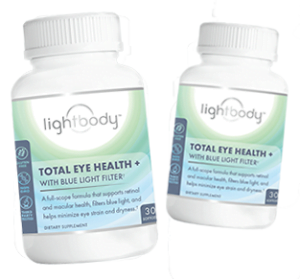Your cart is currently empty!

Benefits of Yoga in a High-Tech & EMF Saturated World
Last Updated on October 3, 2023

Over the last 15 years, we’ve truly become a high-tech society, constantly connected through our mobile devices such tablets and cell phones, as well as the internet and especially social media.
And while all of this has had its incredible advantages, there have been inevitable downsides, to the point where we have become dependent on technology. Enough so, that many are taking pause and considering how tethered to technology they actually want to be and searching out activities they can do to counter its negative effects.
One such activity is yoga. In recent years, more and more people are turning to yoga to create or maintain a sense of well-being in their lives.
The fact is, yoga can be very helpful for balancing out the negative effects of frequent technology use, and even exposure to EMF radiation emitted by mobiles devices. We can actually create harmony between our physical and digital lives, while using ancient practices like yoga and meditation to counteract the potential downsides technology-driven, digital world.
Below, we’ll explore some of the ways that yoga can help you find relief from the negative physical and mental effects of technology and over-exposure to electromagnetic fields.
Physical Benefits of Yoga
Improves Circulation
Yoga helps improve blood flow throughout the body. Our brains reap the benefits of increased oxygenation and blood vessel dilation, which are crucial in relieving headaches.
This 2009 study describes how subjects that went through a 12 week Iyengar yoga training program experienced positive changes in cerebral blood flow and increased activity in certain parts of the brain.
Yoga and pranayama (deep breathing) in particular also stimulate the lymphatic system, the body’s mechanism for filtration of toxins and waste.
Relaxes Muscle Tension
Spending large amounts of time typing on keyboards or gazing at a screen can lead to a stiff neck, aching wrists, or chronically-hunched shoulders.
Yoga invites gentle, expansive motion into these parts of the body and more. The action of “lengthening” muscles is frequently encouraged, which is the ideal remedy for balancing out long periods of being in essentially the same position.
If you suffer from body aches during or after using electronic device and EMF exposure, a session of mindful movement and stretching can provide enormous relief.
Improves Posture
Its easy to fall into poor sitting habits if your job requires being tied to a desk or your constantly hunched over your laptop.
Yoga addresses this by strengthening muscles in the back, abdominal, and pelvic regions, resulting in less slouching and better spinal alignment. A lot of attention is devoted to posture in the majority of yoga classes– after all, alignment is the foundation of each yoga asana (pose).
After enough repetition, healthy posture becomes second-nature. Say goodbye to lower back pain!
Promotes Joint and Cartilage Health
Yoga gives the opportunity to move all of our joints, even the ones that we don’t use frequently on a daily basis. This keeps cartilage (the semi-soft “cushion” between individual joints) strong, as the opposite (inactivity) is a major contributor to the deterioration of cartilage.
Movement also encourages the circulation of synovial fluid, which surrounds joints and helps keep them lubricated. Many yoga poses strengthen the muscles that support joints as well.
Without healthy joints, even the most basic and necessary motions can become difficult. Balancing out technology use with gentle movement of your entire body can go a long way towards preventing this possibility.
Leads to Better Sleep
Practicing yoga before bed, particularly restorative styles, calms more than just the mind.
Reclining poses with long holds and slow, deep breathing help to soothe the nervous system, making it easier to fall asleep at night and sleep more deeply. Replacing evening screen time with just 10-15 minutes of yoga can make all the difference in priming your body for a restful night. Your body will not miss the exposure to sleep-disrupting blue light emitted by your device’s screen. And being away from EMF emissions will allow your brain’s melatonin production to return to normal instead of working against you.
Increases Energy Levels
Whether or not you suffer from digitally-induced fatigue, who doesn’t appreciate a natural energy boost?
A morning or midday yoga session with a focus on strengthening, heat-building poses leaves you feeling calm yet invigorated, as if you have awakened all of the cells in your being. Pranayama also serves to oxygenate the entire body, which is crucial to energy production. And unlike high-intensity workouts, this type of physical activity is accessible to even those with very sedentary lifestyles.
Mental Benefits of Yoga
Improves Focus
Yoga draws one’s attention inward. Whether it’s tuning in to how a particular movement feels in your body, observing the flow of your breath, or being present with your mind’s internal dialogue during your practice, the development of single-pointed focus is an inherent result of spending time on the mat (though it might not happen in your very first class!).
Aside from the immediate positive effect of this focus–feeling centered, peaceful, and completely in the moment– this state of being can be found within you throughout the day, and grows stronger the more you practice. It doesn’t matter how busy you are. There is always time to take a few mindful breaths and ground yourself in a calm state.
In today’s media-saturated world where the next distraction is just around the corner, we all could benefit greatly from learning how to create focus from within.
Relieves Anxiety, Depression, and Stress
One of yoga’s most helpful qualities is its ability to soothe distressing and difficult mind-states.
This practice creates a space to engage fully in the here and now, allowing the day’s stressors outside of class to drop away, at least for the time being. Conscious breathing, as mentioned above, helps to calm the nervous system, effectively halting the body’s chemical “fight or flight” response to stressors.
Yoga may not erase the problems in our lives, but it helps keep us from worrying about them constantly.
If distressing thoughts keep coming up, yoga invites us to observe whatever is going on in our minds at the time with zero judgement. We meet painful emotions with acceptance, patience, or affirmations of self-love and kindness. In doing so, we can break the hold that these negative thought patterns have on our ability to feel at peace. The link between high use of EMF-emitting electronic devices and feelings of anxiety or depression is becoming more well-know.
Yoga is a simple and natural way to combat these unpleasant effects.
Fosters Awareness
In a sense, our yoga practice is like a candle that illuminates a dark room.
It brings awareness into all corners of our lives. In class, this starts with observing our internal states, getting into the little details that have never before been noticed.
With a consistent practice, this witnessing presence extends into our internal states outside of class. We start to notice the patterns and habits that make up our behavior, positive and negative.
With enough presence, we start to see how these patterns make us, and those around us, feel. We can discern what makes us feel healthy and happy from what makes us feel miserable. Awareness is the path to cultivating the habits (and subsequently, the life) that we want.
This also extends to what we choose to put in our bodies and surround ourselves with.
Though we all on some level consume certain things purely for enjoyment, many of these substances are actually toxic to our bodies and minds. We experience this directly through increased awareness of the after-effects they have on us, especially as we transition to a healthier lifestyle. For example, showing up to a morning yoga class after having pizza and beer the night before will feel different than going to the same class well rested, and having consumed a healthy meal instead. Deep breathing will feel so much better once that smoking habit is long gone.
EMFs are also a toxin, so pay attention to how you feel on a day when you spend a lot of time on your computer or smartphone versus a day when you don’t.
Remember that it isn’t awareness itself, but ultimately what we choose to do with what we learn, that changes our health for the better–so if you feel healthier during the latter, reducing your time using electronic devices and exposure to EMFs could profoundly impact your life.
Yoga as Part of a Healthy Lifestyle
A consistent yoga practice can open the door to a world of health benefits. It is beneficial for people of all ages and lifestyles–on a physical level, it’s a low-impact way to elevate one’s heart rate, increase strength, flexibility, and balance, and can even be tailored to individual restrictions or goals.
Yet practicing yoga also does profound work on our inner being, and help to maintain balance in our technology-driven lives.
Virtually everyone could benefit from making yoga a part of their lives. Those of us who are concerned about how EMFs and technology are affecting their health are no exception. In fact, taking up this practice can help reduce many of the specific symptoms that result from frequent EMF exposure.
Just don’t forget that your best option for keeping your electronic devices as safe as possible is simply to use them with moderation and proper protection in the first place.
Related Posts
None found























































